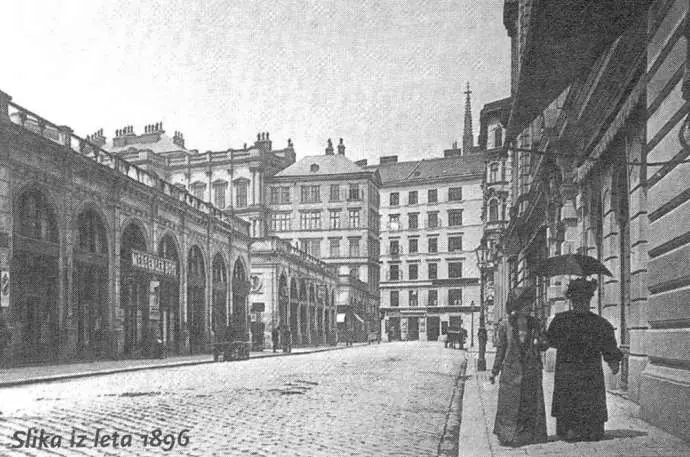In 1676 the Knafelj Bequest was founded on the basis of a will written by a wealthy pastor, Luka Knafelj. In his will Luka Knafelj left all of his property to the Carniolan students, who could from now on compete for scholarships in order to pursue their studies in Vienna.
Luka Knafelj was a bright boy from Ribnica, who was first taken as a student by the Cisterian monastery in Stična, the most influential monastery in Carniola at the time, where he received a strict upbringing and superior education. Being a good student, Luka then earned the privilege of being sent to the Jesuit grammar school in Ljubljana.
Luka Knafelj is mentioned in the school document of February 1640, when he is believed to have finished the six-year grammar school and had enrolled in a two-year lyceum. It is further known that he got enrolled at the University of Graz in 1643 to study philosophy, while he began his studies of theology around 1644, probably in Vienna. He was ordained a priest there in June 1648 when he was 27 years old.
It is not known what the young priest was doing after the completion of his studies, but he reappears in historic records in 1651, when he became a pastor at the Vienna Court Hospital. This is what probably allowed him to get closer to the court and make friends with Jurij Bohinc (Georg Wohinz), a renowned law professor and later also a rector of the University of Vienna.
In 1658 Knafelj became pastor of Groβ Ruβbach in Lower Austria, a parish under imperial protection that lies in the middle of the Weinvierterl wine-growing region, about 50 km north of Vienna. The estate comprised of a mansion and quite a lot of land, and the historic documents suggest Knafelj was as skilful entrepreneur as he was in administrative affairs.
The parish estate was the main source of Knafelj’s income, which eventually allowed him to purchase a nice home in Vienna in 1667, where he lived when visiting the capital. The house, consisting of two interconnected buildings, stands close to the old building of the University of Vienna and the Church of St. Jacob.
Luka Knafelj died from tuberculosis on June 29, 1671 in Vienna. Two weeks prior to his death he put together the will which would, until the fall of the Empire, in 1918, provide about 1,200 Slovenian students with scholarships for the pursuit of their studies in Vienna, among them Jernej Kopitar, France Prešeren, Simon Jenko, Ivan Tavčar, Oton Župančič and others.
Knafelj’s house in Vienna was the main source of funds, which came under the management of the University of Ljubljana in 1961.
The Knafelj Bequest scholarship continues to exist, although it is much more modest today than in the last decades of the Austrian Empire, when it was high enough to cover the entire studying and living expenses of a student who didn’t party much. Today’s stipend consists of one-year free accommodation at Knafelj Home or Korotan Home in Vienna for graduates of the University of Ljubljana who decide to continue their graduate studies at one of the city’s universities.






